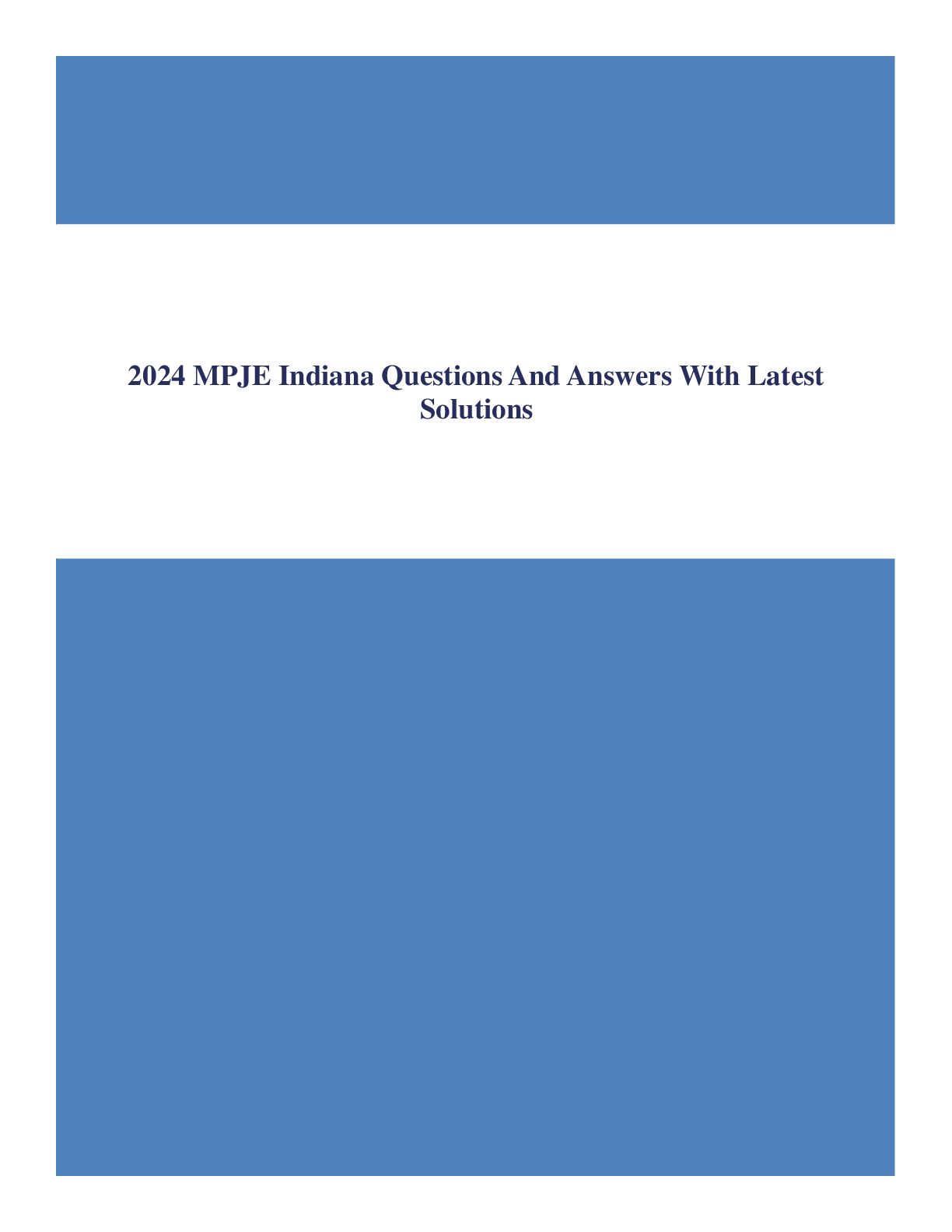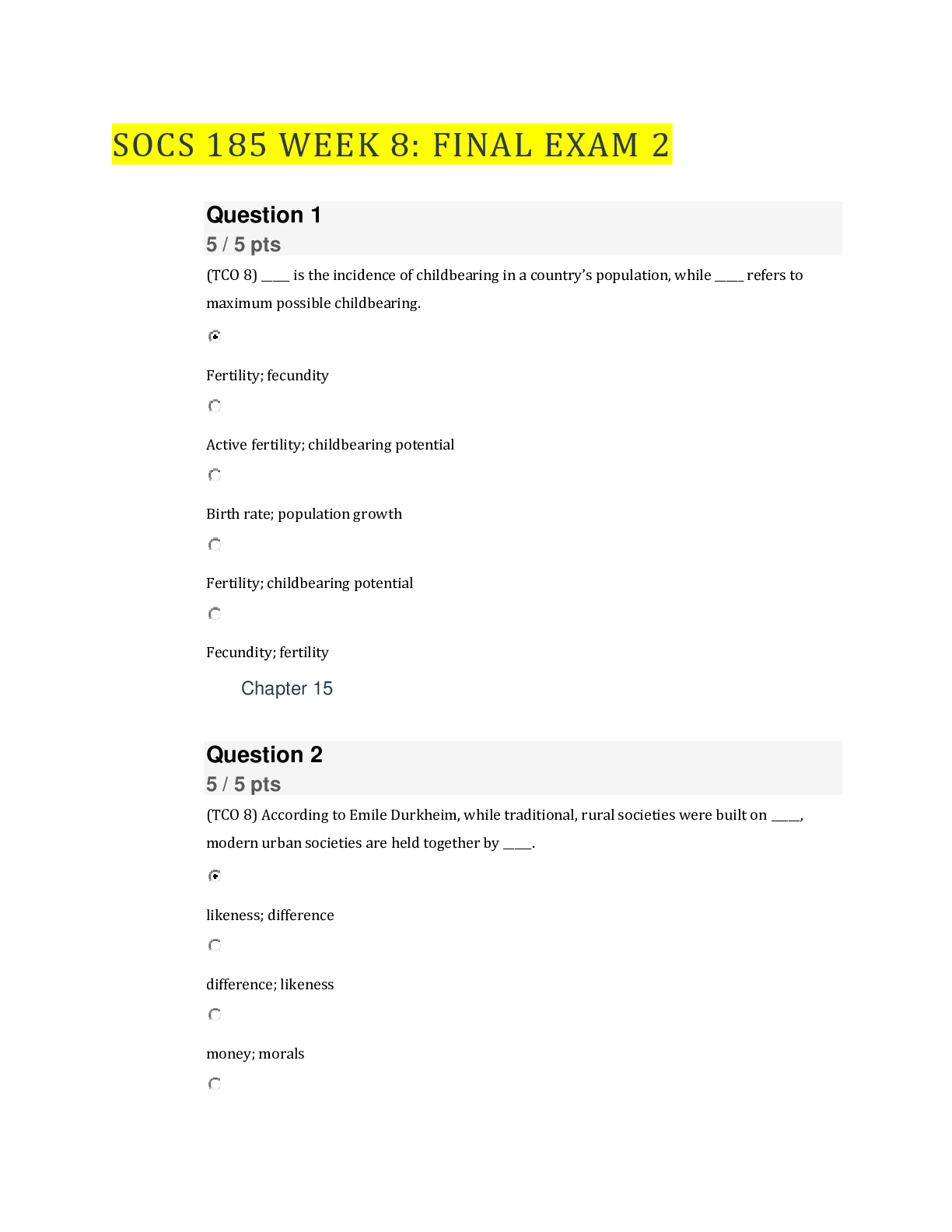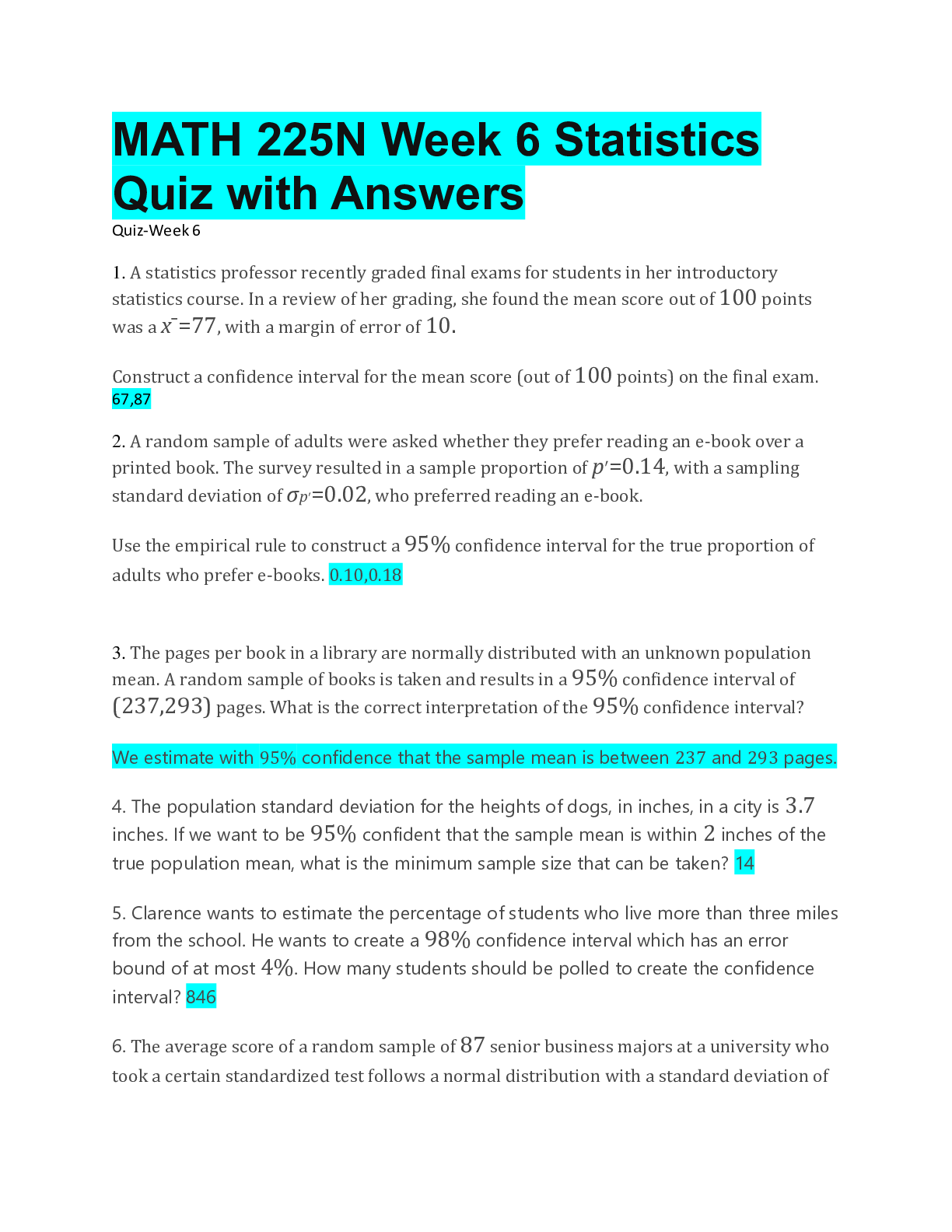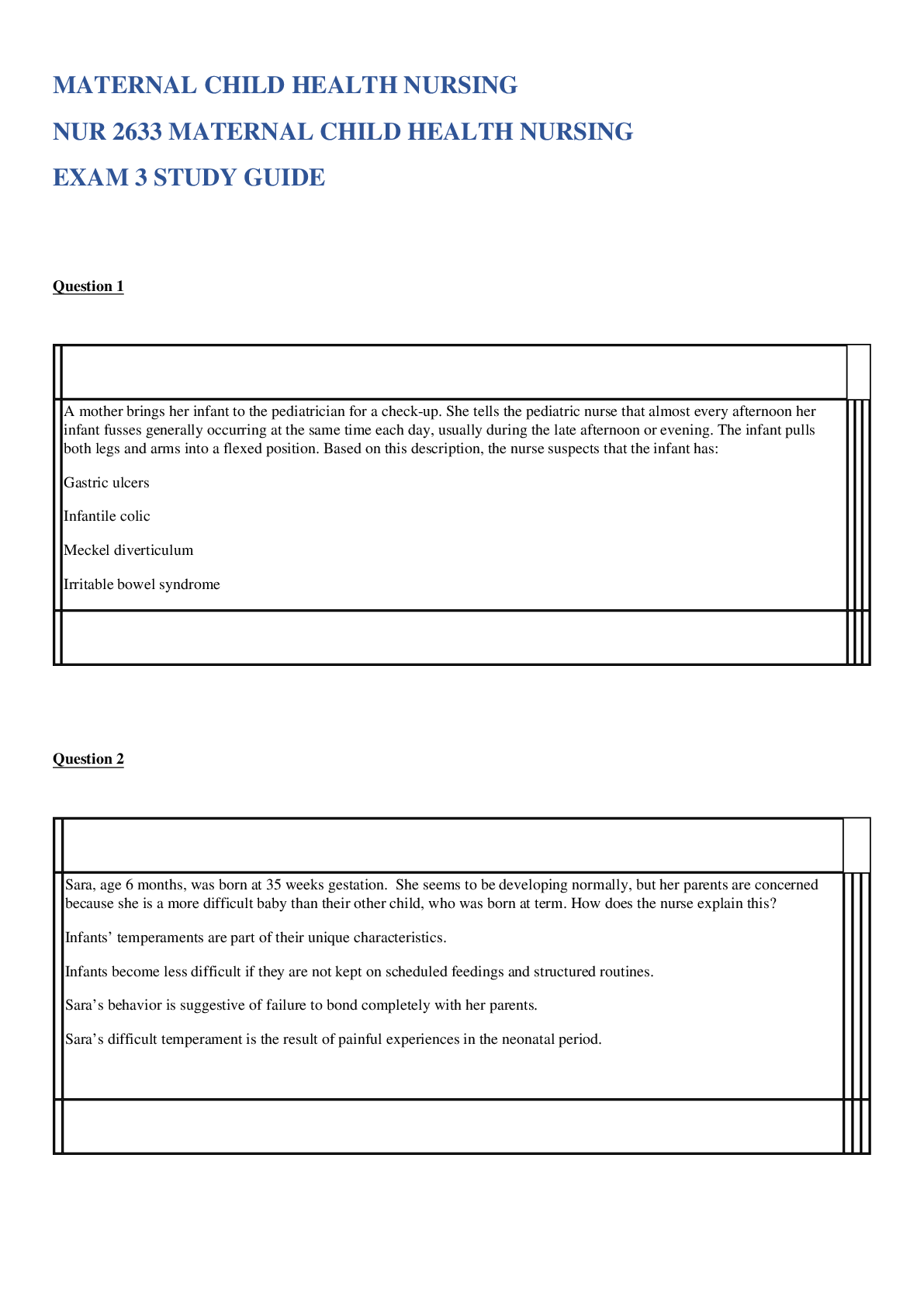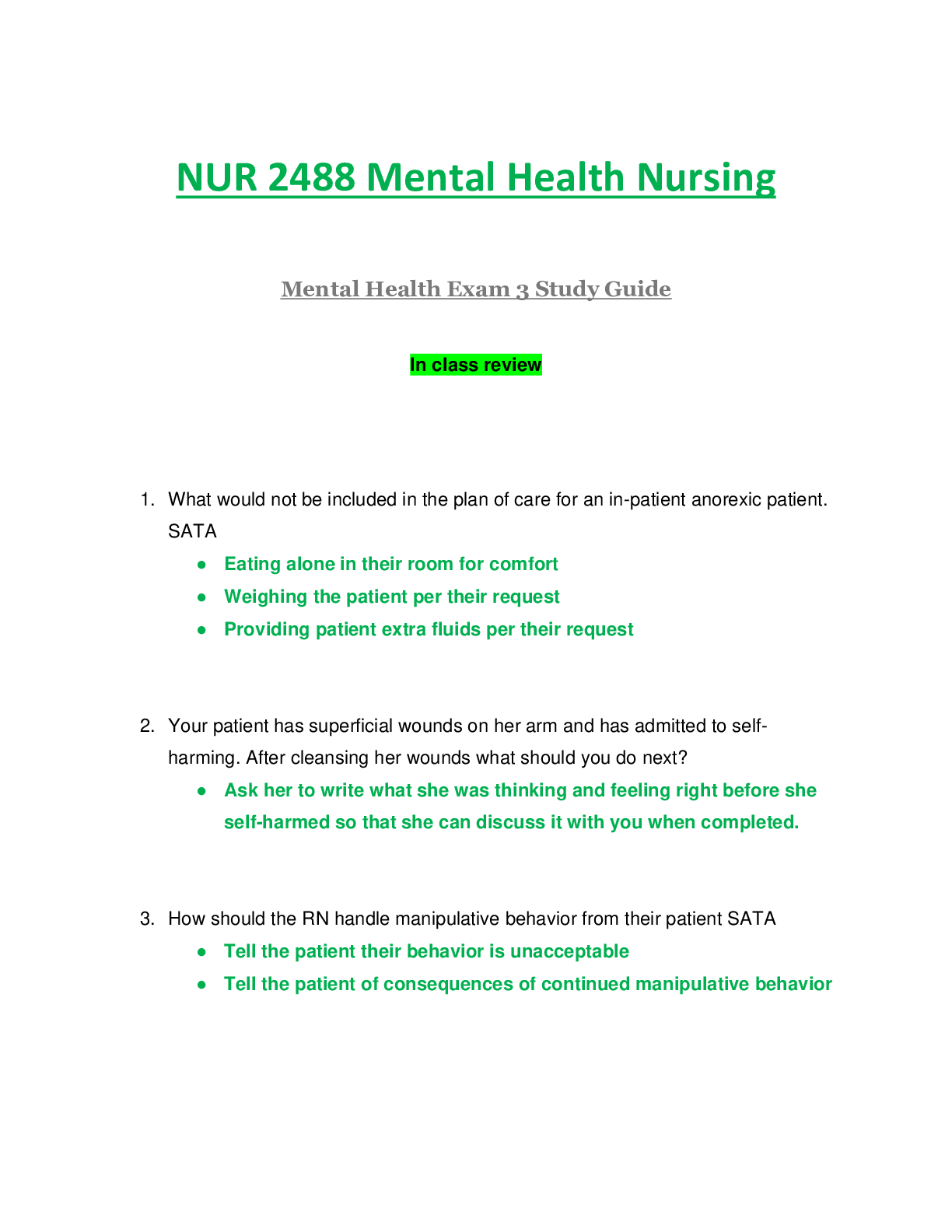Psychology > EXAM > PSY 291 exam 3 study guide | GRADED A (All)
PSY 291 exam 3 study guide | GRADED A
Document Content and Description Below
Which of the questions above is an example of a forced-choice question? a. Question A b. Question B c. Question C d. Question D 2. RESEARCH STUDY 6.1: Professor Singh creates a survey to measure ... how happy his students are with his teaching this semester. He is teaching two classes: Psychology and Law and Introduction to Neuroscience. He writes the following questions for his survey: A. What was your favorite part of this class? B. Please rate how much you agree with the following statement using the scale below: This was one of my favorite classes all semester. 1 2 34 5 Strongly Agree Agree Neither agree nor disagree Disagree Strongly disagree C. Which of the following is most true of you? a. I am a very serious student. b. I try only as hard as I have to. D. How easy did you feel this class was? 1 23 45 Easy Hard Which of the questions above is an example of an open-ended question? a. Question A b. Question B c. Question C d. Question D 3. RESEARCH STUDY 6.1: Professor Singh creates a survey to measure how happy his students are with his teaching this semester. He is teaching two classes: Psychology and Law and Introduction to Neuroscience. He writes the following questions for his survey: A. What was your favorite part of this class? B. Please rate how much you agree with the following statement using the scale below: This was one of my favorite classes all semester. 1 2 34 5 Strongly Agree Agree Neither agree nor disagree Disagree Strongly disagree C. Which of the following is most true of you? a. I am a very serious student. b. I try only as hard as I have to. D. How easy did you feel this class was? 1 23 45 Easy Hard Which of the questions above is an example of a question that uses a Likert scale? a. Question A b. Question B c. Question C d. Question D 4. RESEARCH STUDY 6.1: Professor Singh creates a survey to measure how happy his students are with his teaching this semester. He is teaching two classes: Psychology and Law and Introduction to Neuroscience. He writes the following questions for his survey: A. What was your favorite part of this class? B. Please rate how much you agree with the following statement using the scale below: This was one of my favorite classes all semester. 1 2 34 5 Strongly Agree Agree Neither agree nor disagree Disagree Strongly disagree C. Which of the following is most true of you? a. I am a very serious student. b. I try only as hard as I have to. D. How easy did you feel this class was? 1 23 45 Easy Hard Which of the questions above is an example of a question that uses a semantic differential scale? a. Question A b. Question B c. Question C d. Question D 5. In developing a measure of “need for cognition” (the degree to which people like thinking and problem-solving), Dr. Jonason asks his participants to rate their agreement with the following statement: “I frequently solve and enjoy solving crossword puzzles and Sudoku puzzles.” What is the problem with this question? a. It is a forced-choice question. b. It is a double-barreled question. c. It has a double negative. d. It is a leading question. 6. Why are double-barreled questions problematic? a. They may have poor construct validity. b. They may be too easy to answer. c. They are leading questions. d. They are too conceptual. 7. In his measure of “need for cognition” (the degree to which people like thinking and problem-solving), Dr. Jonason asks his participants to rate their agreement with the following statement: “I have never not enjoyed thinking.” What is the problem with this question? a. It is a forced-choice question. b. It is a double-barreled question. c. It has a double negative. d. It is a leading question. 8. Which of the following is the most direct way to control for question order effects? a. Give the survey questions to different groups of people. b. Prepare different versions of the survey, varying the order of the questions. c. Combine multiple questions into single questions. d. Order effects cannot be controlled for. 9. Dr. Gore is conducting a survey examining people’s opinions toward funding for collegiate athletics on his campus. He notices that several participants agree with all 12 questions. This could be an example of all of the following EXCEPT: a. a response set. b. acquiescence. c. yea-saying. d. fence sitting. 10. How do reverse-worded items address shortcuts? a. They slow down readers, making them answer more carefully. b. They give people more answer options. c. They are easier for people to read. d. They ask each question twice so the participant answers twice. 11. Which of the following increases accurate responding? a. Nay-saying response sets b. Fence sitting c. Reverse-worded questions d. Acquiescence 12. Dr. Gahan decides to create a questionnaire asking about people’s attitudes toward immigration (a socially sensitive topic). He should be most concerned about which of the following? a. People self-reporting more than they can know b. Fence sitting c. Faking bad d. Negatively worded answers 13. Dr. Paul is concerned about a fence-sitting response set when he conducts his survey. Which of the following might you recommend to decrease fence sitting? a. Using reverse-worded questions b. Using scales with an even number of response options c. Providing a “no opinion” option d. Using a Likert scale 14. Forced-choice question formats are especially good at dealing with which of the following issues? a. Fence sitting b. Faking good c. Response sets d. People self-reporting more than they can know 15. Which of the following is true when asking people questions about themselves? a. The confidence people have in their memories is not strongly related to the accuracy of their memory. b. People are very good judges of the reasons for their behavior. c. People are better able to remember vivid memories. d. If people are inaccurate in reporting their reasons for behavior, it is because they are deliberately trying to be deceptive. 16. Which of the following statements is true of observational data? a. Observational measures automatically have good construct validity. b. Observational measures cannot be used to make causal claims. c. Observational measures can be used to make frequency claims. d. Observational measures provide better information than self-report data. 17. A study by Rosenthal and Jacobson (1968) involved telling teachers that some of their students were “bloomers” and would achieve rapid academic success within the next year. In fact, these students were no different than any of the other students in the class. At the end of the year, the “bloomers” showed more gains in IQ than the other students. It appeared that the teacher had unintentionally treated the “bloomers” in special ways. This is an example of which of the following? a. Observer bias b. Observer effects c. A masked study design d. Self-report operationalization 18. Another word for observer effects is: a. observer bias. b. expectancy effects. c. interrater reliability. d. unobtrusive observation. 19. Masked, or blind, study designs are designed to deal with: a. yea-saying biases. b. bystander effect. c. observer bias. d. faking good. 20. RESEARCH STUDY 6.2: Dr. Ewell, a developmental psychologist, is planning on conducting a study that involves watching children play together to determine how sharing behavior occurs in same-sex friend pairs compared to opposite-sex friend pairs. Dr. Ewell is concerned that the children will behave differently because of the presence of research assistants. He is concerned about: a. reactivity. b. observer bias. c. faking good. d. interrater reliability. 21. RESEARCH STUDY 6.2: Dr. Ewell, a developmental psychologist, is planning on conducting a study that involves watching children play together to determine how sharing behavior occurs in same-sex friend pairs compared to opposite-sex friend pairs. Dr. Ewell is concerned that the children will behave differently because of the presence of research assistants. Which of the following could he do to address this concern? a. Make the observations himself instead of using a research assistant b. Have two undergraduate research assistants make the observations instead of just one c. Observe the same-sex friend pairs on the first day and the opposite-sex friend pairs on the second day d. Hide a video camera in the daycare center and record the children playing without them knowing 22. RESEARCH STUDY 6.2: Dr. Ewell, a developmental psychologist, is planning on conducting a study that involves watching children play together to determine how sharing behavior occurs in same-sex friend pairs compared to opposite-sex friend pairs. Dr. Ewell decides to collect his data at a neighborhood park. He has his two research assistants pose as a married couple having a picnic. While having their picnic, they take detailed records of the sharing behavior of the children and note whether the pairs are same sex or opposite sex. This technique is known as: a. a blind study design. b. unobtrusive observation. c. delayed observation. d. a double-blind study design. 23. RESEARCH STUDY 6.2: Dr. Ewell, a developmental psychologist, is planning on conducting a study that involves watching children play together to determine how sharing behavior occurs in same-sex friend pairs compared to opposite-sex friend pairs. Dr. Ewell decides to collect his data at a neighborhood park. He has hi s two research assistants pose as a married couple having a picnic. While having their picnic, they take detailed records of the sharing behavior of the children and note whether the pairs are same sex or opposite sex. Given his use of two research assistants, he must establish the of their measures. a. face validity b. convergent validity c. interrater reliability d. test-retest reliability 24. RESEARCH STUDY 6.2: Dr. Ewell, a developmental psychologist, is planning on conducting a study that involves watching children play together to determine how sharing behavior occurs in same-sex friend pairs compared to opposite-sex friend pairs. Imagine that Dr. Ewell calculates a correlation (e.g., ICC) for his two raters. Which of the following would be the best value for Dr. Ewell to find? a. 0.92 b. 0.02 c. 0.89 d. 1.15 25. RESEARCH STUDY 6.2: Dr. Ewell, a developmental psychologist, is planning on conducting a study that involves watching children play together to determine how sharing behavior occurs in same-sex friend pairs compared to opposite-sex friend pairs. Which of the following is Dr. Ewell likely to give his research assistants to prevent observer bias? a. A video camera b. A developmental psychology textbook c. A codebook d. Binoculars [Show More]
Last updated: 2 years ago
Preview 1 out of 27 pages
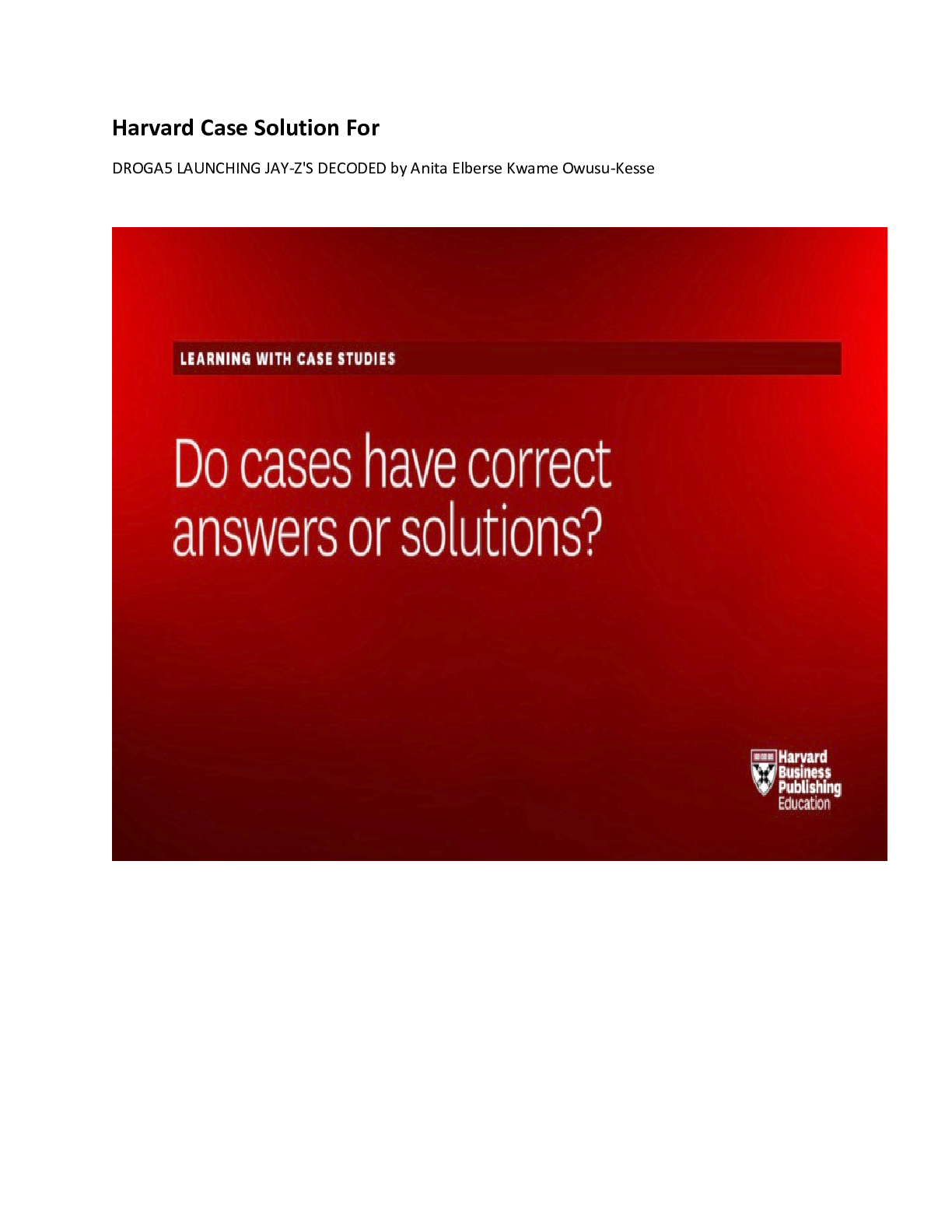
Buy this document to get the full access instantly
Instant Download Access after purchase
Buy NowInstant download
We Accept:

Reviews( 0 )
$14.00
Can't find what you want? Try our AI powered Search
Document information
Connected school, study & course
About the document
Uploaded On
Feb 20, 2021
Number of pages
27
Written in
Additional information
This document has been written for:
Uploaded
Feb 20, 2021
Downloads
0
Views
52

